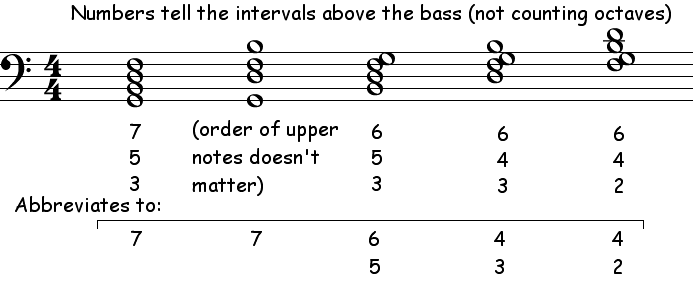Answer: The numbers come from the old practice of "figured bass" or "thoroughbass," which in the 18th century was a common shorthand for keyboard players. The keyboard part was written as a bass line with numbers that indicated the desired harmony; the keyboardist would improvise accompaniment based on those numbers. It was really a lot like the practice of modern jazz keyboardists in improvising from a "lead sheet" that indicates only the melody and chord symbols. Some performers like Bach were famous for their ability to improvise complex accompaniment that sounded as if it had been composed.
The numbers indicate the intervals required above the bass note. A "6" would mean that the harmony should include a sixth above the bass - without or without additional octaves; the octave doesn't matter.
The numbers are themselves abbreviated. If the bass were the root of a triad its proper numbers would be 5/3 (a fifth and a third are above the bass), but that's a common occurrence, so if the bass is the root then the numbers are skipped. Similarly, a triad with its middle note in the bass position would have the numbers 6/3, but this is shorted to "6" because the 3 seems obvious enough.
At this point you can probably figure out the meaning of the numbers you mention for seventh chords. For example, put a G7 chord in 3rd inversion and the notes will read, from the bottom up, F, G, B, D (the upper three notes can be in any order). Measuring intervals from the bass note F you can see that the three needed intervals are 6, 4, and 2. Since all the inversions of a seventh chord include 6, this is abbreviated to "4/2." Here are all four positions for a G7 chord: root position, first inversion, second inversion, third inversion. Remember that you can freely mix up those upper notes, moving them by octaves.

You can find a more thorough description of figured bass in pages 56 ff. and p. 64 of Exploring Theory with Practica Musica, together with suggested exercises in the software.

